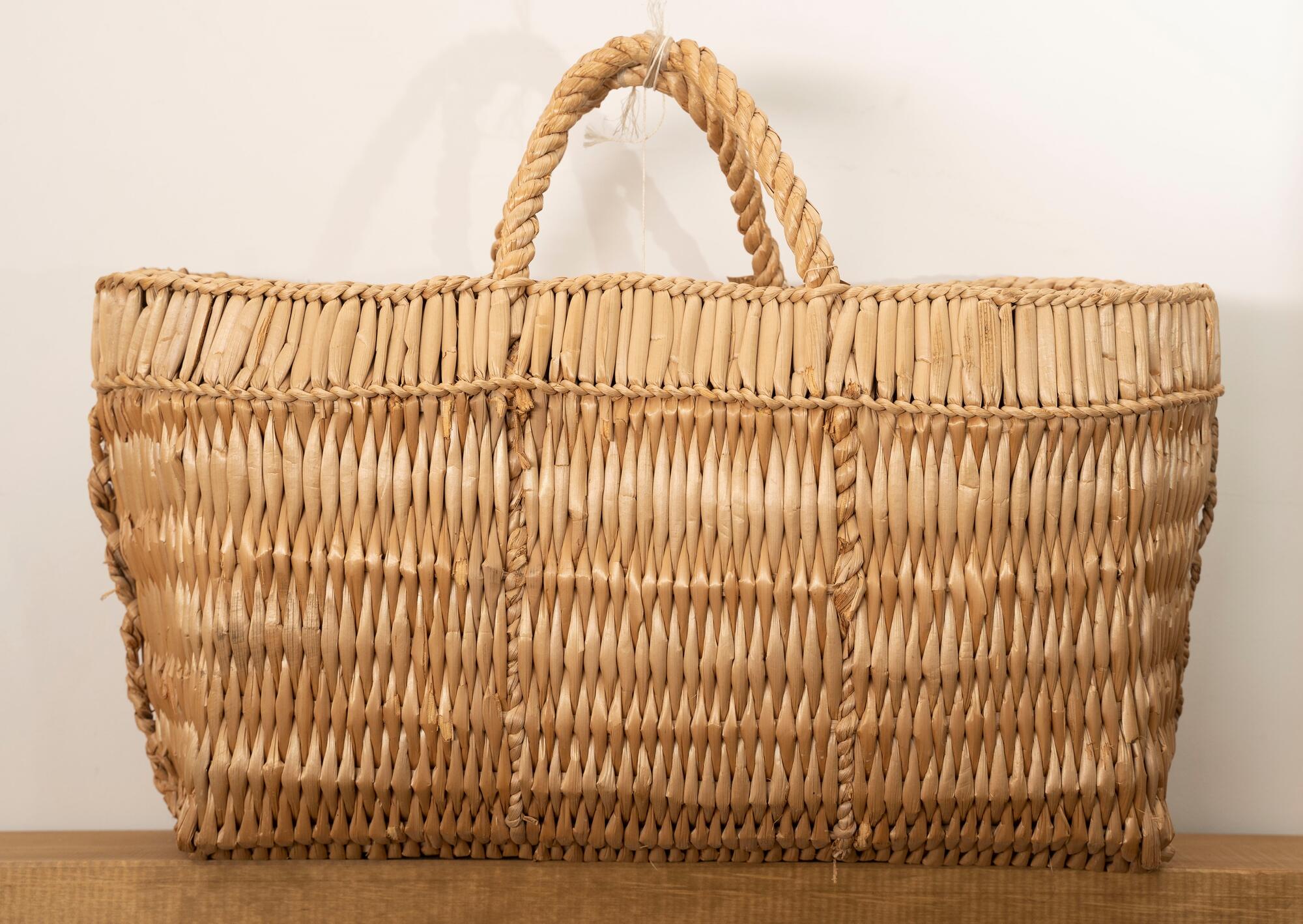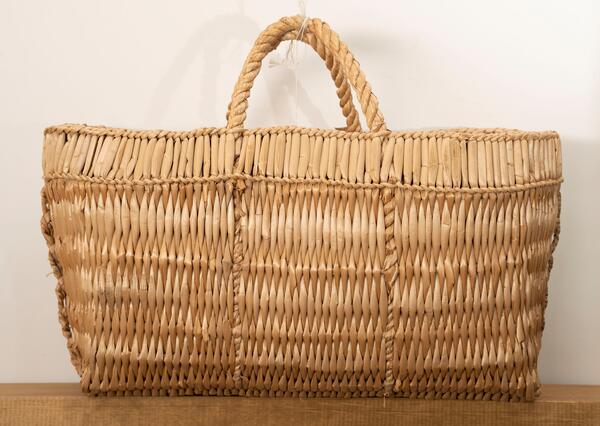Zembels manufacturing was traditional for Russia. German colonists - Sareptians quickly adopted this craft from local residents. Zembels were woven on Sarpinsky Island In the vicinity of Sarepta and in the large village of Dubovy Ovrag, located 18 kilometers south of Tsaritsyn - current Volgograd. Zembels were very popular among the Russian population, they were well bought at fairs in Sarepta.
Zembel is a woven bag or basket of cattail or bulrush. Cattail, or chakan, are tall marsh grasses that resemble bulrush. The origin of the word ‘zembel’ is not exactly known. According to the most reliable version this word was brought to Russia by the Persians, who had a community in Astrakhan and who were engaged in weaving baskets like these.
Zembels were woven in various sizes and shapes. They could be used to carry rather heavy things, since they were quite strong. There were also long zembels convenient to transport large fish.
In autumn, in September and October, cattail and reed harvesting began on local lakes. The stems were cut under water with a sickle, soaked and dried until yellow. Then it was cleaned, peeling off layer by layer to the core - its flexible part. Having prepared the material, they proceeded to weaving baskets.
Whole artels were engaged in weaving in Sarepta. In addition to baskets of various sizes, the Sareptians wove chests, rugs, got pads, special zembels for catching fish, bees, for storing documents and for other needs from cattail. There were zembels with decorations and buttons. The wickerwork of Sarepta craftsmen was in great demand in the local market. Landmark craft has not been lost to this day.
Special machines were used for the manufacture of zembels. Such a machine is a wooden frame-bed. Nails were stuffed at a distance of four centimeters above and below on the crossbars. A wooden wedge made of wood was attached to the side to pull the base.
The so-called ‘strings’ were made from the soft core of the bulrush. They were pulled vertically onto the frame, fastened with nails, left in the center above and below, four nails free of weaving, which formed the ‘bottom’ - the corners of the basket.
Weaving began with the formation of funnels from the edges to the bottom, 12 centimeters high. Then the main part of the basket was woven from beginning to end. A handle was woven horizontally in the middle. Periodically, the ‘strings’ were taut with a wedge. The finished base was removed by cutting with a knife from above and below. The workpiece was bent in the area of the bottom, forming the corners of the zembel. Different patterns were made when weaving.
Zembel is a woven bag or basket of cattail or bulrush. Cattail, or chakan, are tall marsh grasses that resemble bulrush. The origin of the word ‘zembel’ is not exactly known. According to the most reliable version this word was brought to Russia by the Persians, who had a community in Astrakhan and who were engaged in weaving baskets like these.
Zembels were woven in various sizes and shapes. They could be used to carry rather heavy things, since they were quite strong. There were also long zembels convenient to transport large fish.
In autumn, in September and October, cattail and reed harvesting began on local lakes. The stems were cut under water with a sickle, soaked and dried until yellow. Then it was cleaned, peeling off layer by layer to the core - its flexible part. Having prepared the material, they proceeded to weaving baskets.
Whole artels were engaged in weaving in Sarepta. In addition to baskets of various sizes, the Sareptians wove chests, rugs, got pads, special zembels for catching fish, bees, for storing documents and for other needs from cattail. There were zembels with decorations and buttons. The wickerwork of Sarepta craftsmen was in great demand in the local market. Landmark craft has not been lost to this day.
Special machines were used for the manufacture of zembels. Such a machine is a wooden frame-bed. Nails were stuffed at a distance of four centimeters above and below on the crossbars. A wooden wedge made of wood was attached to the side to pull the base.
The so-called ‘strings’ were made from the soft core of the bulrush. They were pulled vertically onto the frame, fastened with nails, left in the center above and below, four nails free of weaving, which formed the ‘bottom’ - the corners of the basket.
Weaving began with the formation of funnels from the edges to the bottom, 12 centimeters high. Then the main part of the basket was woven from beginning to end. A handle was woven horizontally in the middle. Periodically, the ‘strings’ were taut with a wedge. The finished base was removed by cutting with a knife from above and below. The workpiece was bent in the area of the bottom, forming the corners of the zembel. Different patterns were made when weaving.



